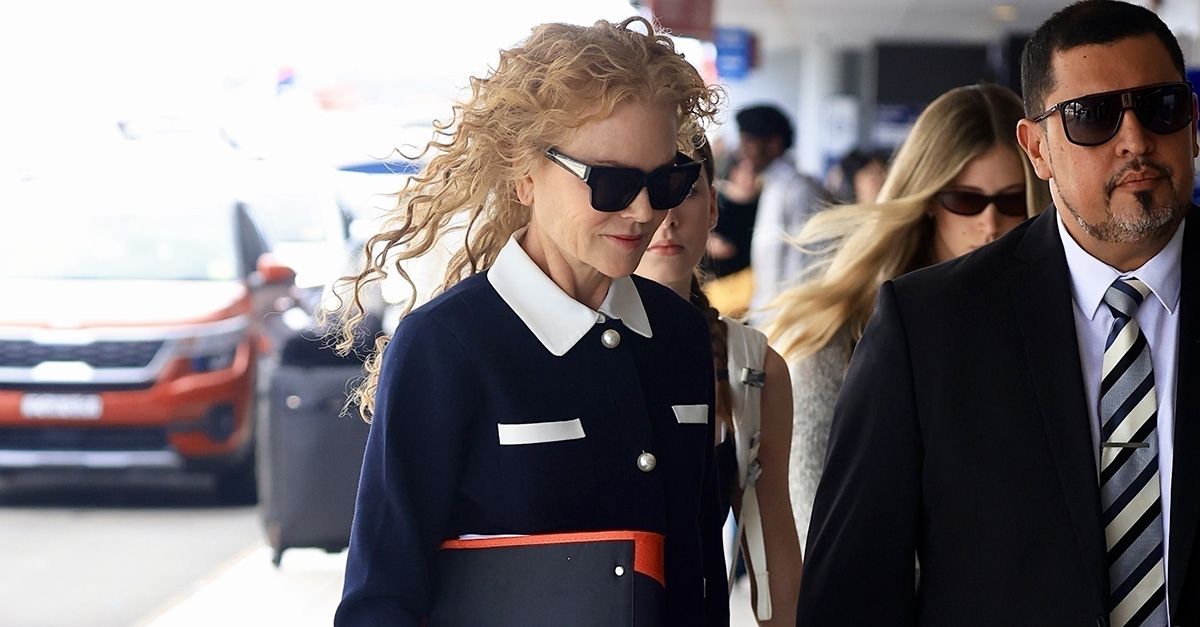“Every time I survived a war zone, I thought I was sending a warning home: don’t do this,” Kirsten Dunst’s veteran photojournalist Lee tells another in Civil War. “But here we are.” The sentiment sums up writer/director Alex Garland‘s anti-war messaging, told through a visceral assault on the senses as it plunges its characters on a road trip through a nightmarish vision of a war-ravaged America. The constant onslaught of foreboding tension and stunning documentary style prowess in capturing the raw horror ensure a breathless, potent piece of filmmaking. If only its substance were as meaty as its sense of impeccable style.
Civil War presents a harrowing race against the clock as a small group of journalists trek across dangerous terrain in a determined bid to make it to the White House ahead of rebel factions. It’s a road trip movie of sorts, as Dunst’s Lee is joined by her colleague Joel (Wagner Moura), her mentor Sammy (Stephen McKinley Henderson), and hasty newcomer Jessie (Cailee Spaeny) for a winding, roundabout voyage from New York to DC. Their journey presents no shortage of grim realities, tense standoffs, and death.
Alex Garland frames the war through the eyes of those who document it. The war itself is painted in broad brushstrokes, aside from some minor early dialogue that reveals that many states have seceded, the third-term president (Nick Offerman) is expected to surrender, and that key states have formed separate alliances. Garland avoids any specificity or commentary about what drove the country to war or the political dimensions that contributed. Instead, the filmmaker focuses on how it affects those who are forced to swallow their humanity to effectively do their job, even when it consistently puts them in grave danger. Civil War insists that the hows and whys of the war itself are irrelevant to the country’s constant threat of violence in the present.
The craftmanship on display is powerful and effective. Garland captures this grim reality with an almost documentary-like style that’s immersive. Shaky handheld camera work lends a dynamic quality to the intense action sequences. Stunning compositions, breathtaking visual flourishes, and tactile details further highlight the diseased sense of beauty to Civil War. The sound design and deafening blasts of weaponry further keep you on edge, and Garland twists the knife with an upbeat soundtrack at odds with the violence on screen.
What grounds the constant sensory assault is the relationship between Lee and Jessie, two photojournalists at opposite ends of the cycle. Dunst plays the world-wearied Lee with an aloof intelligence; Lee’s seen so much that she’s almost unflappable. Almost. While a notable, jarring scene sees Lee falling asleep in the grass amidst a sniper standoff, Dunst imbues Lee with enough cracks to tease the endless trauma the seasoned journalist collected in her tenure. Opposite her is the impulsive Jessie at the start of her career, all too eager to forgo safety for that perfect photo. That Lee captures her images in color while Jessie prefers simple black and white reveals more about their cyclical arcs in the context of this harrowing setting.
It’s the cast and Garland’s constant barrage of violence through a variety of nerve-fraying scenarios, with one of the most sadistic featuring Jesse Plemmons, that makes Civil War a gripping watch. It’s a master class in filmmaking, ideal for the big screen. But when all is said and done, its messaging feels muddled and empty. It’s clear in its anti-war messaging with its onslaught of realistic violence and raw horrors meant as a cautionary tale. Instead of fleshing out this hellish vision of America and the ideologies and politics that led to this grim point, Garland opts to focus on culpability. While that makes for an effective conversation starter, it’s a bit too shallow once the shock value has worn off.
Civil War made its world premiere at SXSW and is slated to release in theaters on April 26, 2024.


























































![Mason Ramsey – Twang [Official Music Video] Mason Ramsey – Twang [Official Music Video]](https://i.ytimg.com/vi/xwe8F_AhLY0/maxresdefault.jpg)
























